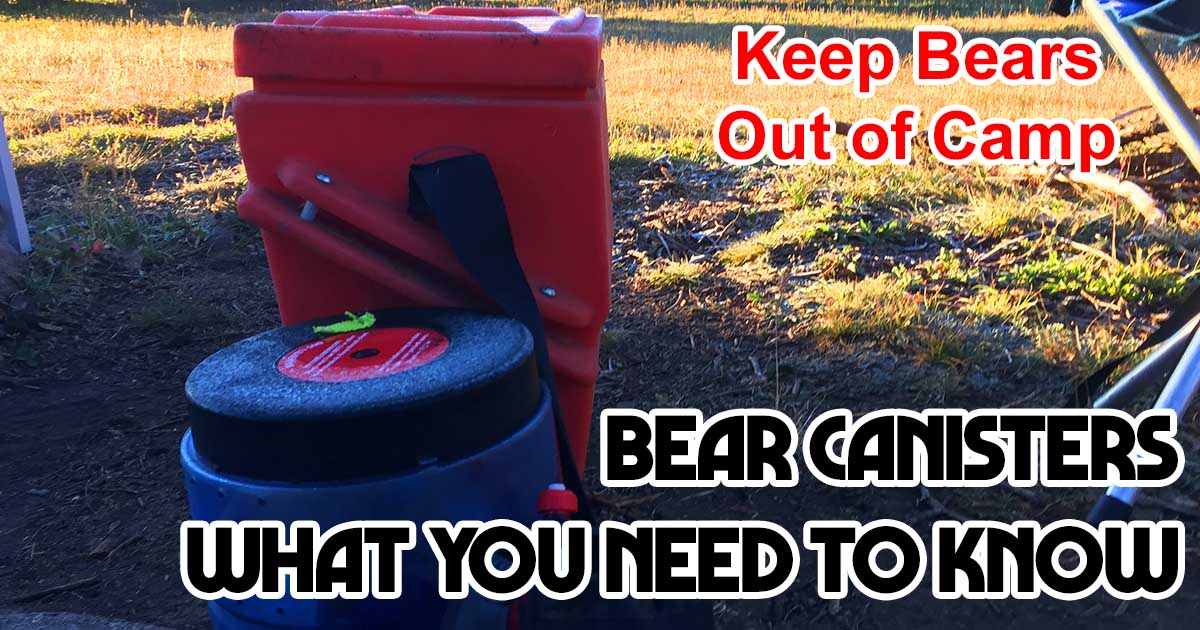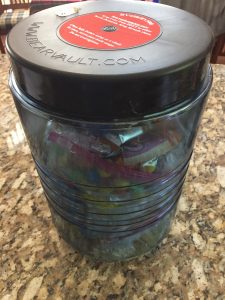What to Know About Bear Canisters
I think we can all agree, keeping bears out of our camps is a good idea. But what to know about bear canisters? What are the best practices?
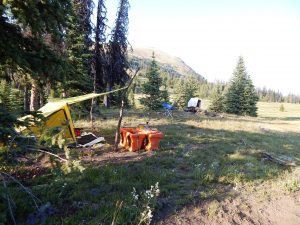 When it comes to horse camping, there’s no shortage of preferences. You can argue backcountry versus campground, the best season to camp, or the best animals for equine camping (that would be a mule).
When it comes to horse camping, there’s no shortage of preferences. You can argue backcountry versus campground, the best season to camp, or the best animals for equine camping (that would be a mule).
What we can all agree on is that bears aren’t wanted in camp. A bear rummaging through camp can cut your trip short and endanger both you and the bear. Thankfully, you can avoid that situation by storing attractants properly with a bear canister.
What Is a Bear Canister?
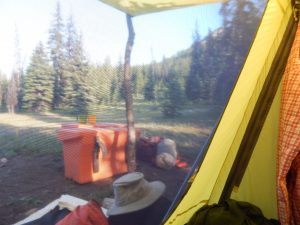
Bear canisters — Also known as bear cans or bear vaults — are simply bear-resistant food containers whose main purpose is to protect your food from bears, rodents, and other wild animals. They can be hard or soft and come in a wide variety of shapes and construction types.
I used to use bear resistant pannier boxes but have moved on to smaller easier to use solutions such as the Bear Vault.
For more info on the Bear Vault – https://bearvault.com – https://amzn.to/32BdIkA
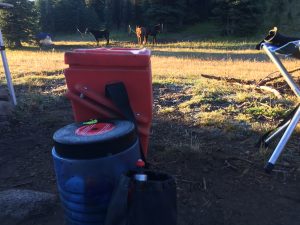 Bears have an incredible sense of smell and can home in on scents from great distances. Once they smell potential food, their noses lead them straight to the source.
Bears have an incredible sense of smell and can home in on scents from great distances. Once they smell potential food, their noses lead them straight to the source.
DID YOU KNOW? A bear’s sense of smell is 7 times better than a dog’s and 2,100 times better than that of a human.
Even though bears are generally afraid of humans, they can become curious if they smell a potential food source. Using a bear canister properly can help you avoid such unwanted visitors. Bears that learn to associate people with food often become dangerous and are ultimately killed or placed in captivity giving meaning to the phrase “a fed bear is dead bear”. Keeping bears out of our and garbage is the best way to ensure their survival in the wild and a great camping trip for you.
How Do You Use a Bear Canister?
Where you store a bear canister is important. Store bear canisters at least 100 yards from your camp. Make sure that the canister is secure and fully closed. Keeping the canister locked and closed will help to reduce food odors in the area and prevent attracting nearby bears. NOTE: Most bear canisters don’t keep all odors locked in but rather make it too difficult for a bear to get to the items of interest and realize any food rewards.
The only time your food and other items should be out of the bear canister is when you’re cooking or using them. After use, store any leftover trash in the canister. Practice packing your canister at home before you leave the house to make sure everything will fit in the canister.
Opening a bear canister can sometimes be difficult. After all, they need to protect your food from bears that can weigh up to 800 pounds, if they were easy to open that might defeat the purpose.
DID YOU KNOW? There’s an official bear-resistant certification process that takes place at the Grizzly & Wolf Discovery Center in Montana. The Discovery Center has a protocol for testing equipment that involves filling a bear resistant container with tempting foods. If the container can keep the bear out for at least an hour it passes as “bear-resistant” and receives its certification.
When Should You Use a Bear Canister?
Put simply: If you’re camping anywhere there’s potential bear activity or any other wild animals, a bear canister is a good idea. Beyond that bear canisters are required in many areas. Know the rules for the area that you’re going to be camping in. An example is the Bob Marshall Wilderness in Montana which requires that food and other attractants be stored in a bear resistant manner across the Forest. Be sure to check the requirements when planning your trip. www.TrailMeister.com has direct links to the land manager for every area listed. Click through and learn if bear resistant measures are required.
The phrase “better safe than sorry” is a cliche for a reason. Even if there are no regulations where you plan to camp, we recommend using a bear canister to avoid interactions with “mini-bears” such as raccoons, chipmunks and other critters looking for an easy meal as well as reducing the risk of attracting a larger ursine visitor.
What goes in a Bear Canister?
While you may think food is the only thing you’ll be keeping in a bear canister, there are a few other things you’ll want to store as well. Essentially, anything that has a smell that could spark a bear’s interest should be loaded in the container.
This list includes:
Food – Toothpaste – Toiletries – Lip balm – Sunscreen – etc.
What to Know About Bear Canisters: Basic Safety Tips
- Store the bear canister at least 100 yards from your tent.
- Cook, eat, and clean at least 100 yards from your tent.
- Brush your teeth away from camp and keep scented hygiene products in the canister with your food.
- Be bear aware. Be alert, make noise, and stay on trails.
- Bring bear spray and know how to use it.
- Finally, Leave No Trace!
Most bears avoid people. Most campers never know that they’ve been near a bear because bears do a great job of avoiding us. If you should see a bear don’t panic. Most encounters end with the bear and human departing in opposite directions, without harm to either. The chance of being hurt by a bear is lower than your risk of being hit by lightning and much lower than the possibility of being hurt in a car accident as you drive to the trailhead.
For more information on trail riding and horse camping visit us www.TrailMeister.com.


